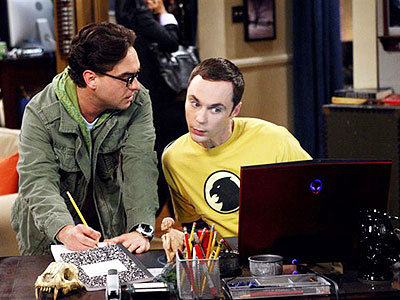TV Shows: Archive Crawls and Checking In
Published on July 18th, 2012 in: Streaming, The Internets, TV |By Lisa Anderson

Recently, I started watching The Big Bang Theory. With regular programs in summer reruns, I’ve tuned into syndicated episodes of the show, which many of my friends enjoy but which I’d never thought to watch before. Not having started from the beginning, I’ve been left to piece together many details about the character and their storylines. None of this would be remarkable except for the ways in which television viewing has changed over the past few years.
These days, more and more people are electing not to have traditional TV service—even those who are fairly invested in popular culture. This is true of many of my friends, and has been true of me in the past—and may be again in the near future. For many people, this is an economic consideration, but the fact is there are other ways to obtain television programming (especially scripted) that many people feel offer them better value for their money. These include Netflix, Hulu+, and various “on demand” services. There are also a plethora of TV shows, both new and old, available on DVD and Blu-Ray.
This has given rise to a practice that a friend of mine refers to as the “archive crawl”: watching a show all the way through, from the pilot episode. There are advantages to this type of viewing: you get to see the characters develop and their relationships evolve, and watch the plots and subplots unfold. You can do marathon viewings on weekends, or make a nightly ritual of watching an episode or two of the show. Certain nostalgic associations will develop between the show and whatever was going on in your life at the time (or the people you watched it with.) Shows that I have watched in this way include How I Met Your Mother, Angel, Supernatural, and, up until Tracy Morgan showed his ass here in Nashville, 30 Rock.
People my age (in their 30s) and older can remember when there wasn’t this sort of availability. When I was growing up, cable TV was new, and the “VHS v.s. Beta” debate was just getting settled. Watching a show like I’m watching The Big Bang Theory—coming into it mid-stream—was just how you watched, whether in first-run or syndication, if you didn’t see it from the beginning. Also, while there were fandoms and fanzines at the time, it was before the Internet, and before pop culture academia really took off. There weren’t as many resources with which you could become an expert on something in popular culture over a weekend.
The truth is, I’m enjoying watching random, syndicated episodes of The Big Bang Theory, instead of doing an an archive crawl. There’s nothing wrong with an archive crawl, and I’ll probably do them in the future. There’s something about taking a break from that sort of commitment, though, that’s relaxing, especially as a member of geek culture. Perhaps it’s nice, in this age of control and instant gratification, to leave our entertainment to chance for once. It also helps in appreciating each episode as an individual unit.
It’s possible that everyone has some shows that they’d rather watch this way than straight through. I find that I enjoy “checking in” on old eps of Criminal Minds minds better than I do “crawling” through them.
Less than a hundred years after the invention of television and motion pictures, we have unprecedented access to their content, not only in terms of how it’s acquired, but the devices on which it’s watched. People in their twenties and younger will grow up accustomed to such access, and are likely to see technology make even greater advances in their lifetime. While how people watch TV shows is, of course, hardly the most important thing in the world, it’s worth reflecting on, to the extent that content, business, and culture all influence each other. It’s also worth considering whether or not it might be nice, if only for nostalgia’s sake, to turn on a random rerun once in awhile.
Time limit is exhausted. Please reload the CAPTCHA.